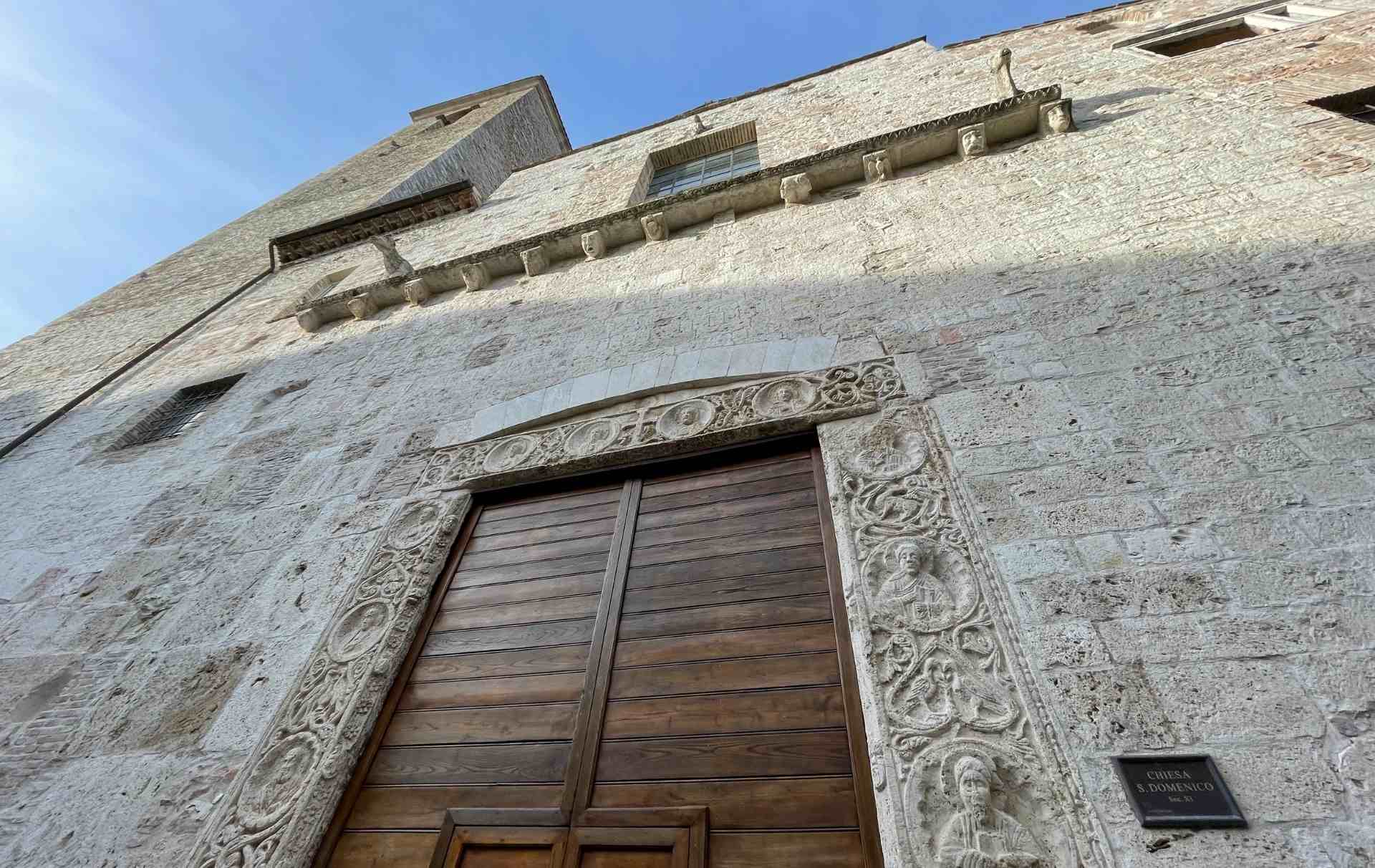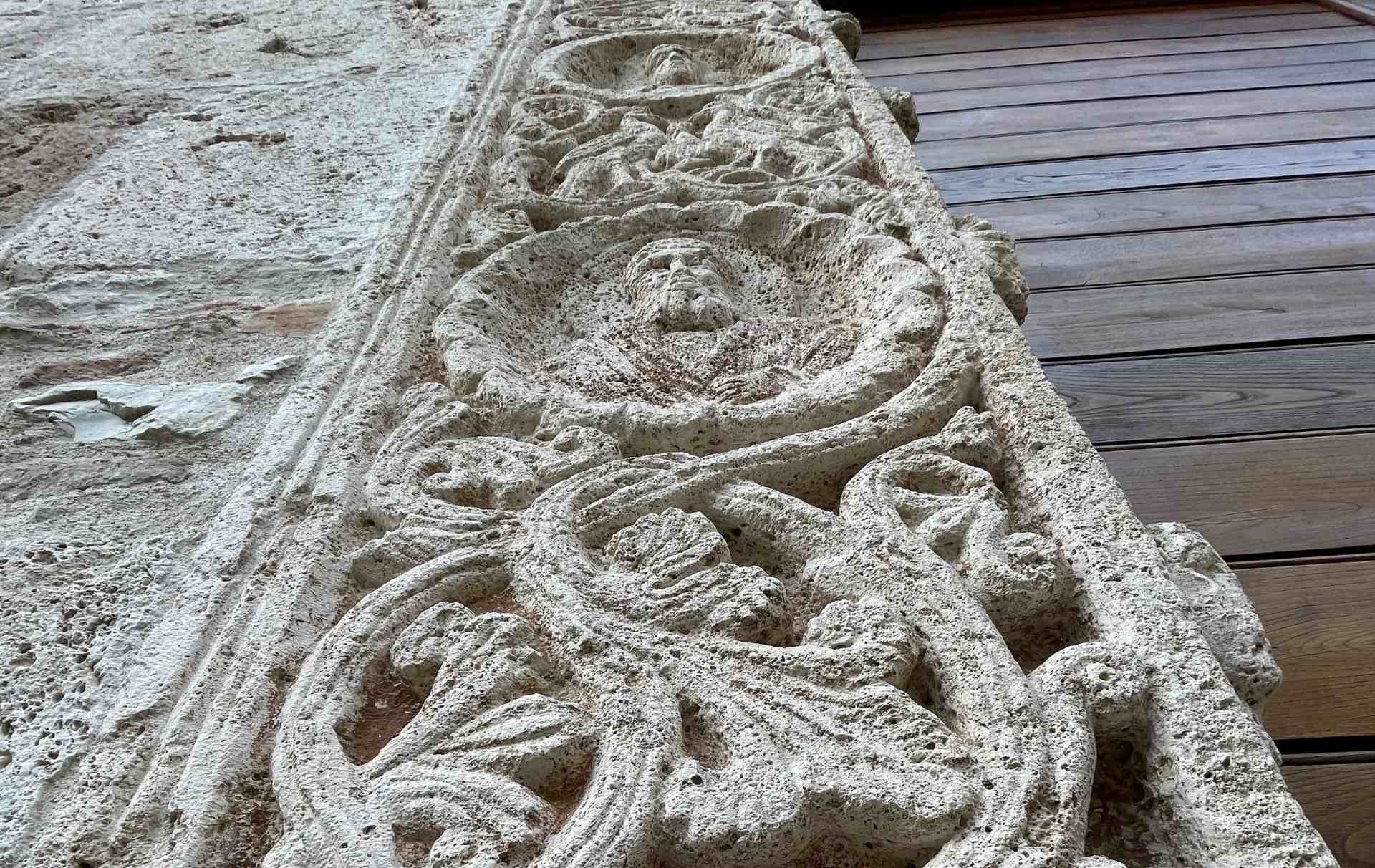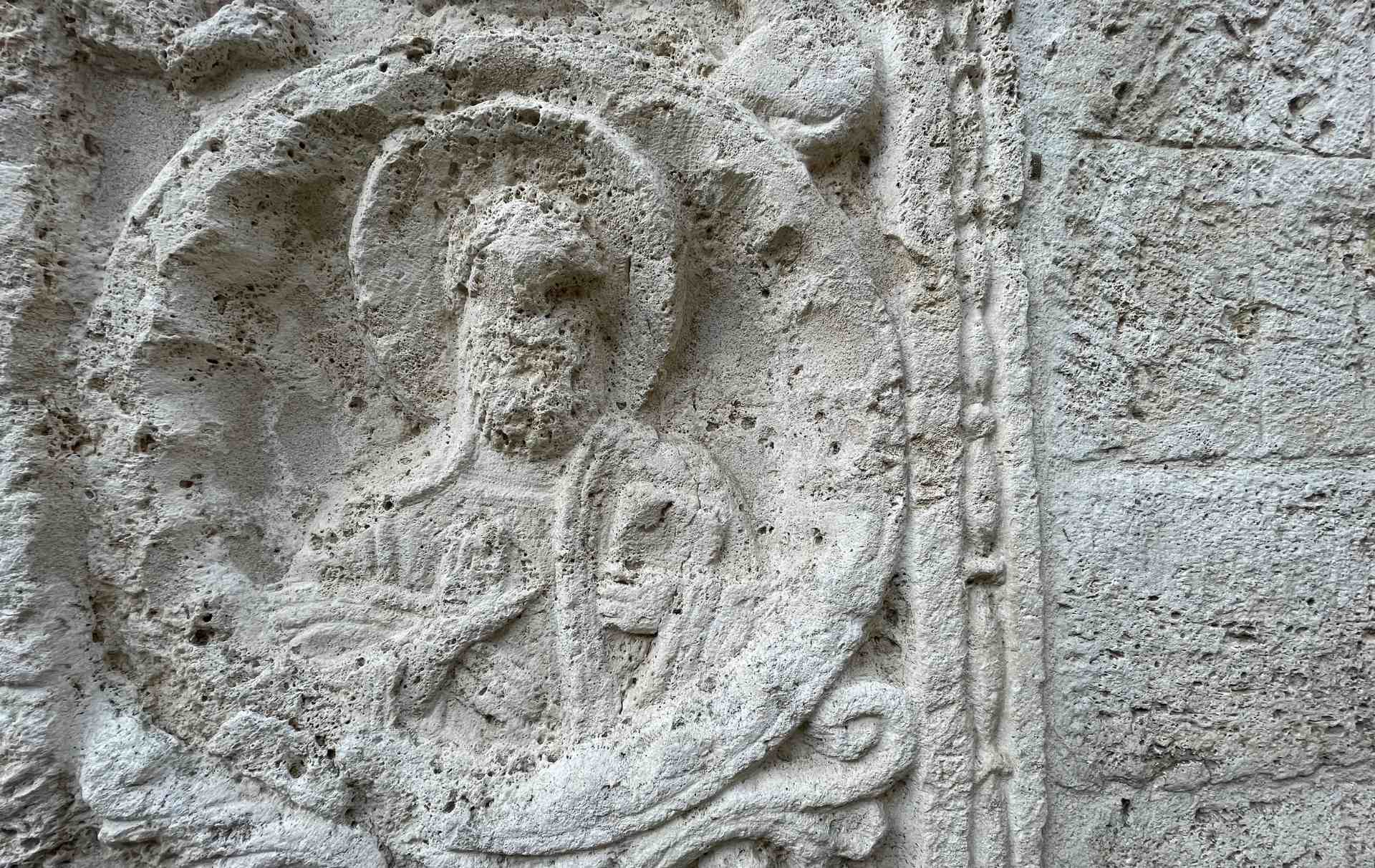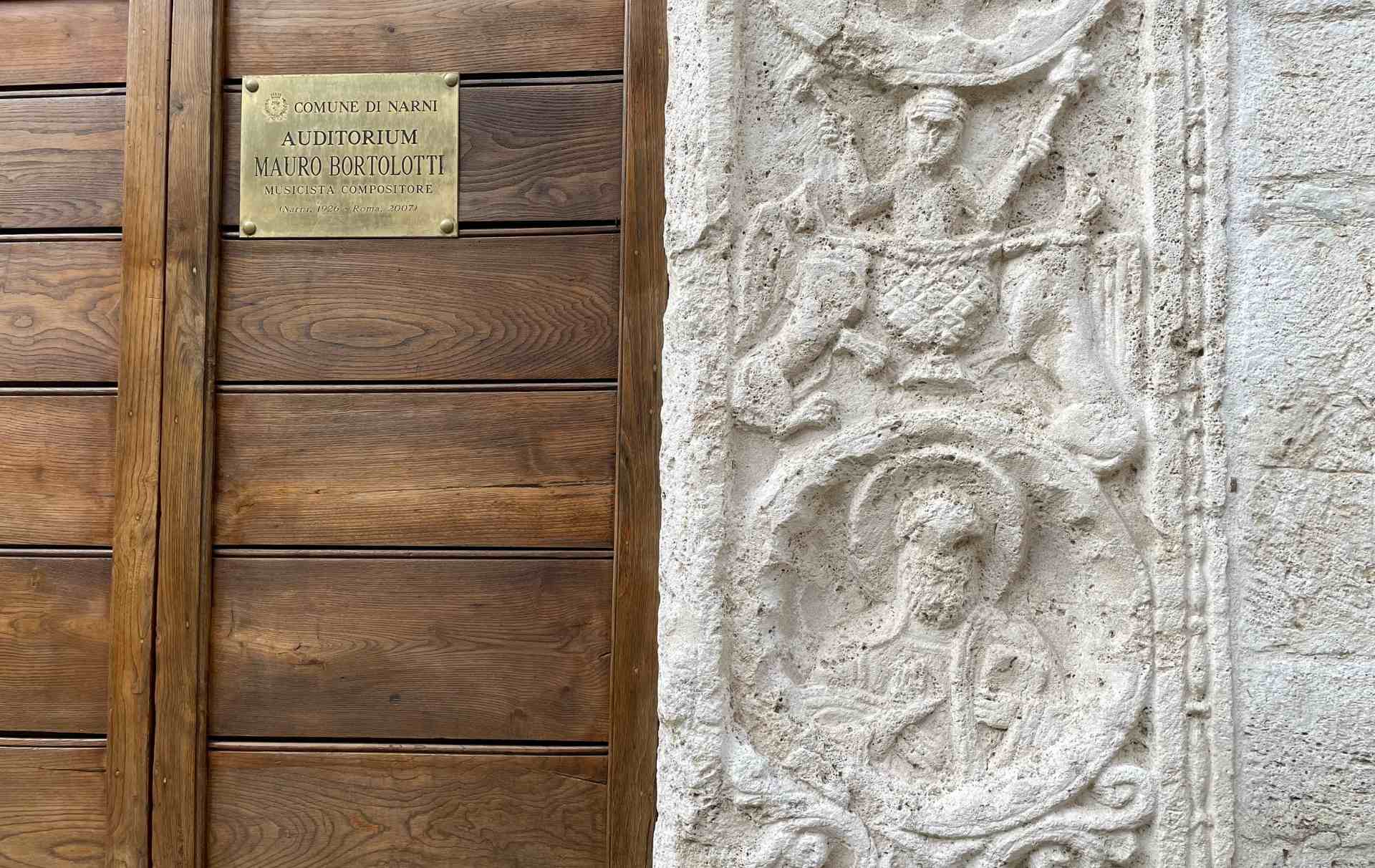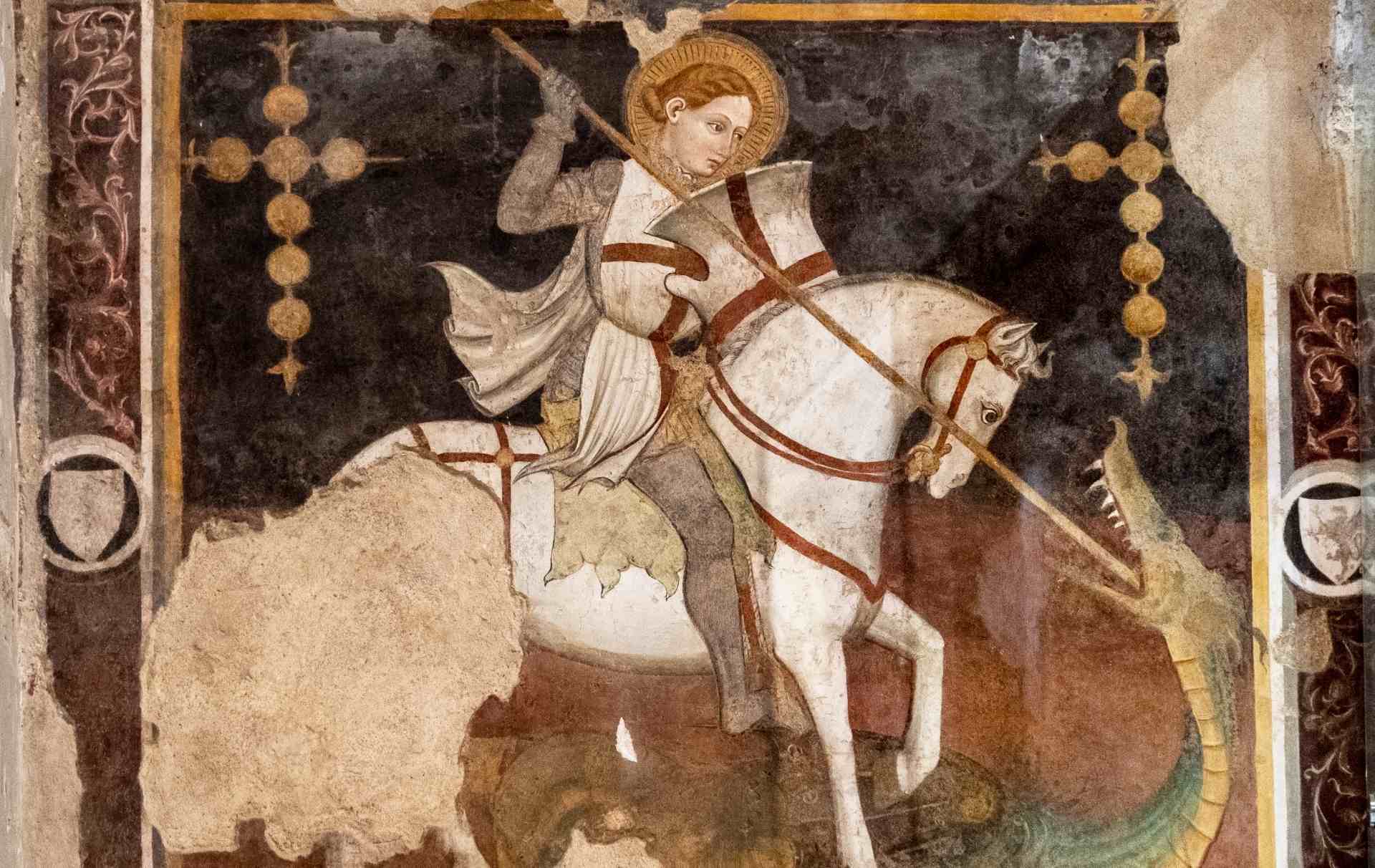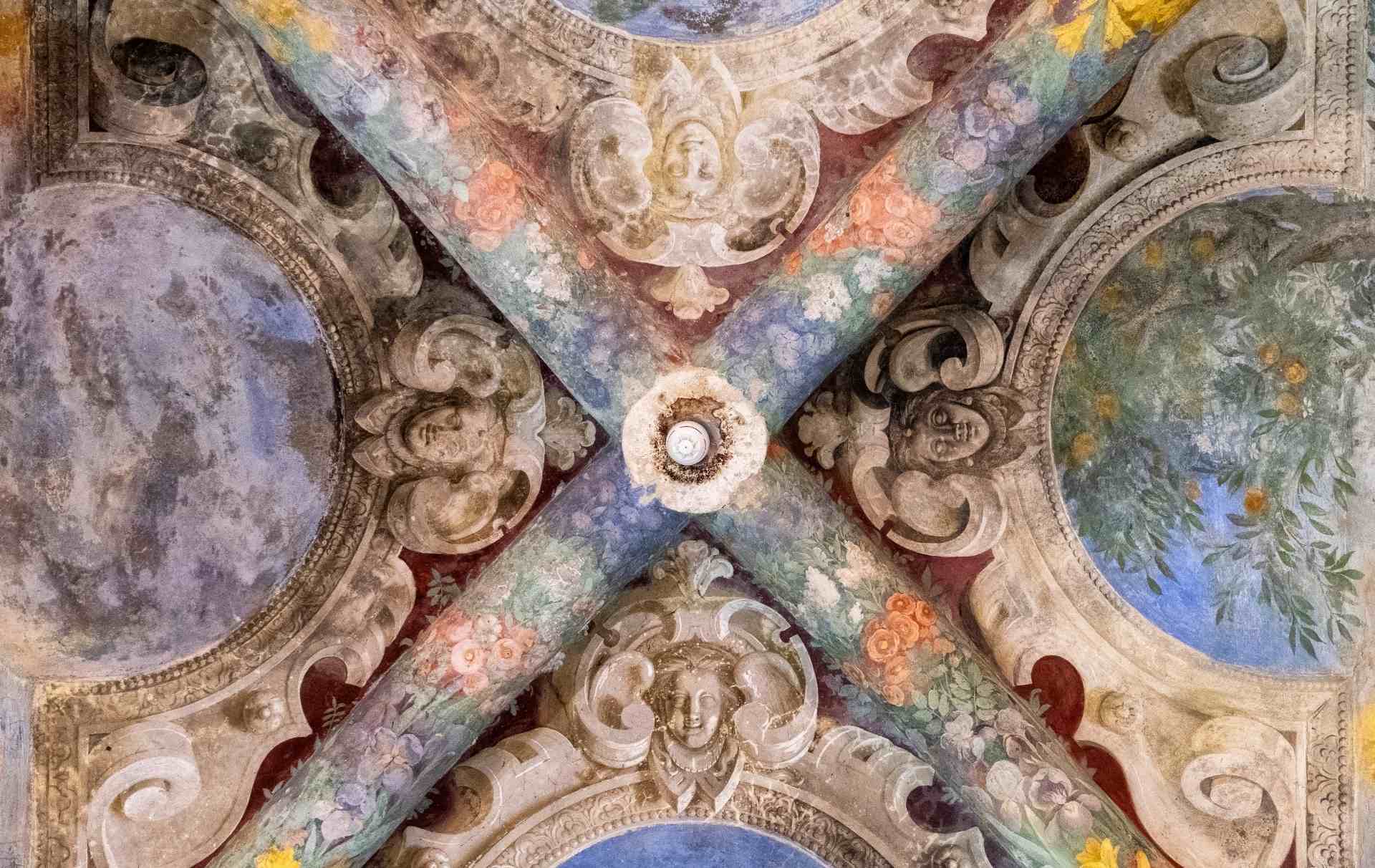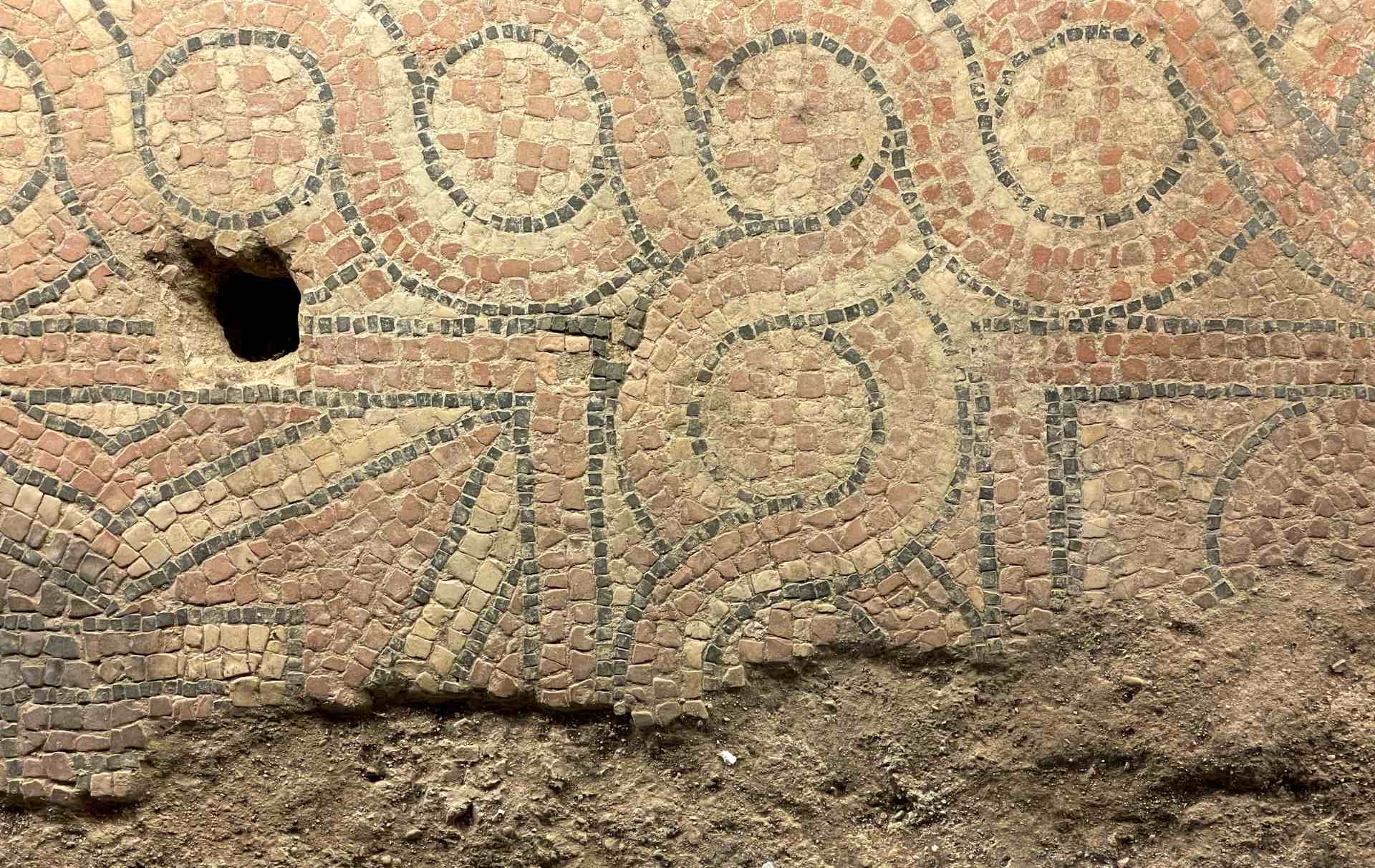That which today is a modern Mario Bartolotti Auditorium, in the past was the first Cathedral of Narni. Entrusted then to the Dominicans, was part of a large deconsecrated convent complex in 1867.
We talk about one of the most majestic works of Narni, the Ex Church of San Domenico.
San Domenico, in the past Santa Maria Maggiore, Cathedral of Narni.
The Cathedral of Narni , with the name of Santa Maria Maggiore, was consecrated in 1148 by Pope Eugenio III and built above a previous building of the Byzantine period of which were discovered recently some mosaic environments.
In 1304 the Cathedral was transformed into San Giovenale and the church was entrusted to the Dominicans.
After the half of the XIX century was deconsecrated and the following bombing destroyed part of the convent , then rediscovered and visied in what we know today we know as Narni Underground.
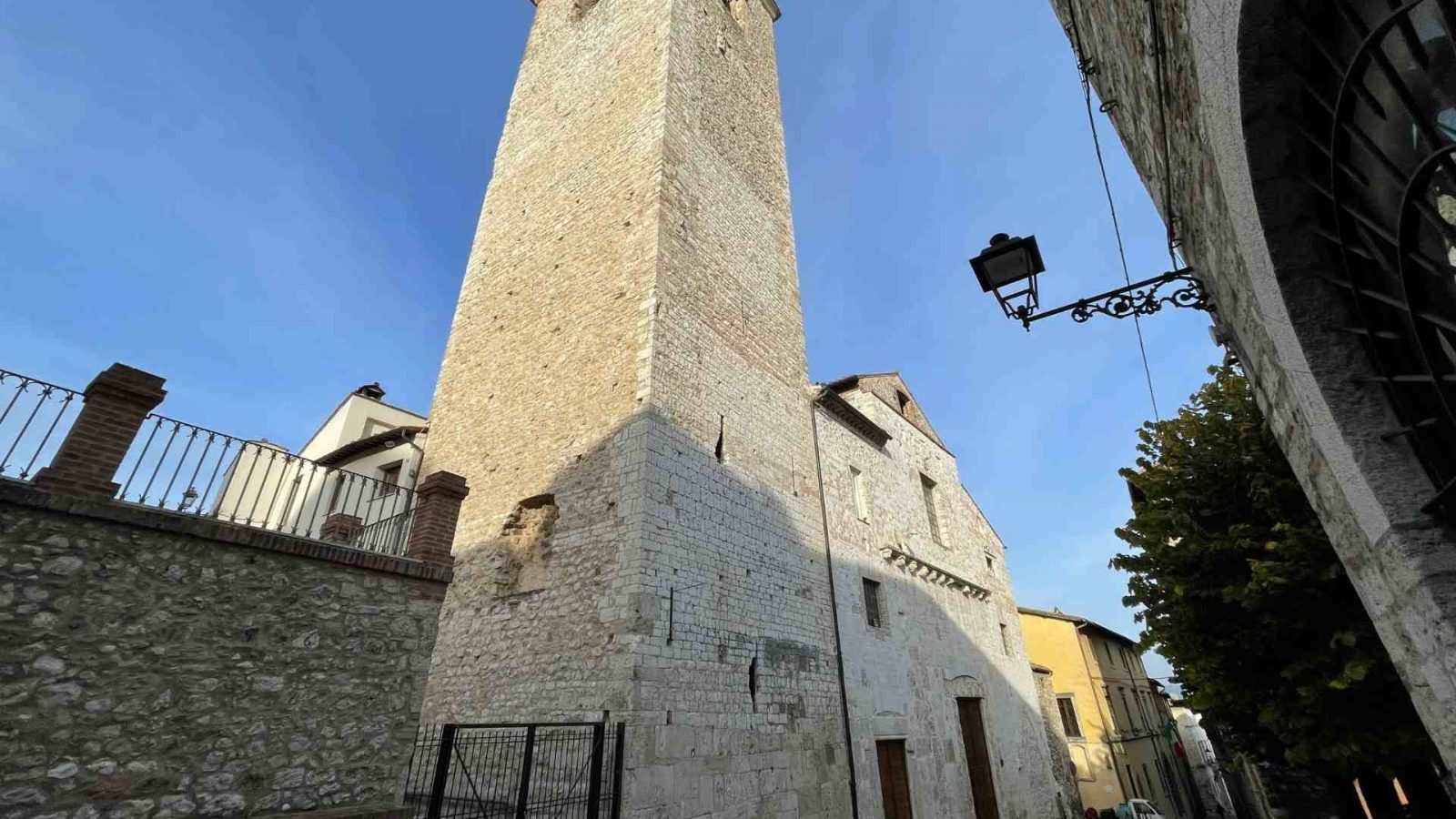
An imponent complex and a particular door of the XII Century.
The former Church of San Domenico, today is presented with an important architecture: an high bell tower overlooks all the complex and the facade shows very eloquently the various phases of construction and adaptation.
Though extensively reworked, one of the most peculiar elements of the structure is this particular entrance door which is composed of three decorated blocks with twelve manly busts and vegetal ornaments which recent studies refer to the XII century.
On the architrave, a cross and two figures which are genuflected, two stone blocks are sculpted in telamon.
A big window has taken the place of three original windows, similar to those visible on the facade of the Church of San Giovenale : typical elements of the architecture of Narni. Under those is visible a long transversal frame of masks that are made from caryatids, above the frame , two lions are inserted in the wall maybe with a decorative purpose, like in other buildings of the city. In the facade and tower brick , especially in the lower part , it is possible to see some elements recovered from old roman constructions, as were used in the past times.
The two entrances, on the center and on the left are still open, while the right entrance is completely walled, probably after 1527 as it is suggested by the painting inside placed in its correspondence.
An art jewelry between Middle Age and Renaissance.
The inside has three aisles divided by pillars which sustain the semi-circular arches different from each other for wide.
At the bottom, the actual apse modified in the first half of 1600, has made disappear any trace of the primitive architecture, recently unearthing , in part, by archeological excavation.
The chapels were add in the XV Century and are belonging to some most illustrious families of Narni: that of the Gattamela’s family; that of the Arca’s family; and that more imponent, in two arches, dedicated to the Madonna del Rosario, painted, with scenes of the Old and New Testaments, by the Zuccari’s brothers.
Placed against the last left pillar there is a beautiful sculpted marble tabernacle , that for its composition and finesse of the work, could belong to the school of Antonino Duccio.
In the pillar in front is placed the sepulcrum of the younger Gabriele Massei (1494) last scion of that noble family, work of lombard inspiration.
On the walls are visible frescos which are from the XIII to the end of the XVI century.
Particularly is the San Giorgio in the counterface and , in the second right pillar, a crucifixion belonging to Maestro della Dormitio, which are even belonging to the decorations with the Saints who are running vertically in the contiguous faces.
At the end of the left aisle there is the fresco with the Madonna between The Saint Domenico and Tommaso from the end of the XV century which belongs to Pier Matteo from Amela or to his school.
On the lateral walls , in the opposite side , a piece of fresco belongs to Lorenzo Torresani, while next to the entrance and on the vault of the second arch there are a Crucifixion and a San Martino which are parts of the production of that school of Narni which between the 1300 and 1400 has left traces of its works.
The ancient apse, the crypt and the Byzantine mosaic.
With the archeological excavation of 2007 have emerged the remains of the ancient apse and the crypt dating to the XII century and, with them, a remarkable portion of the floor mosaic dated VI century and parts of a structures of byzantine period which it could linked to the presence of the first Cathedral of Narni.
The Annunciation of Benozzo Gozzoli.
Preserved today in the art gallery inside the Eroli Palace, the Annunciation of Benozzo Gozzoli, one of the most important works of Narni, in the past was preserved in this church.
In addition to the historical attestations, the decoration on the carpet at the foot of the Virgin with white and black dogs, would refer to the Canes Domains or just to the Dominican friars owners of the Church of San Domenico.
San Domenico and Narni Underground.
The ex convent complex of San Domenico , and the church , are part of the suggestive visit link to Narni Underground which start from the rediscover of the Church of Madonna della Rupe and, passing into roman ambiences and into the Torment room of the Santo Uffizio, arrive in that which was one of the most important churches of the town of Narni.
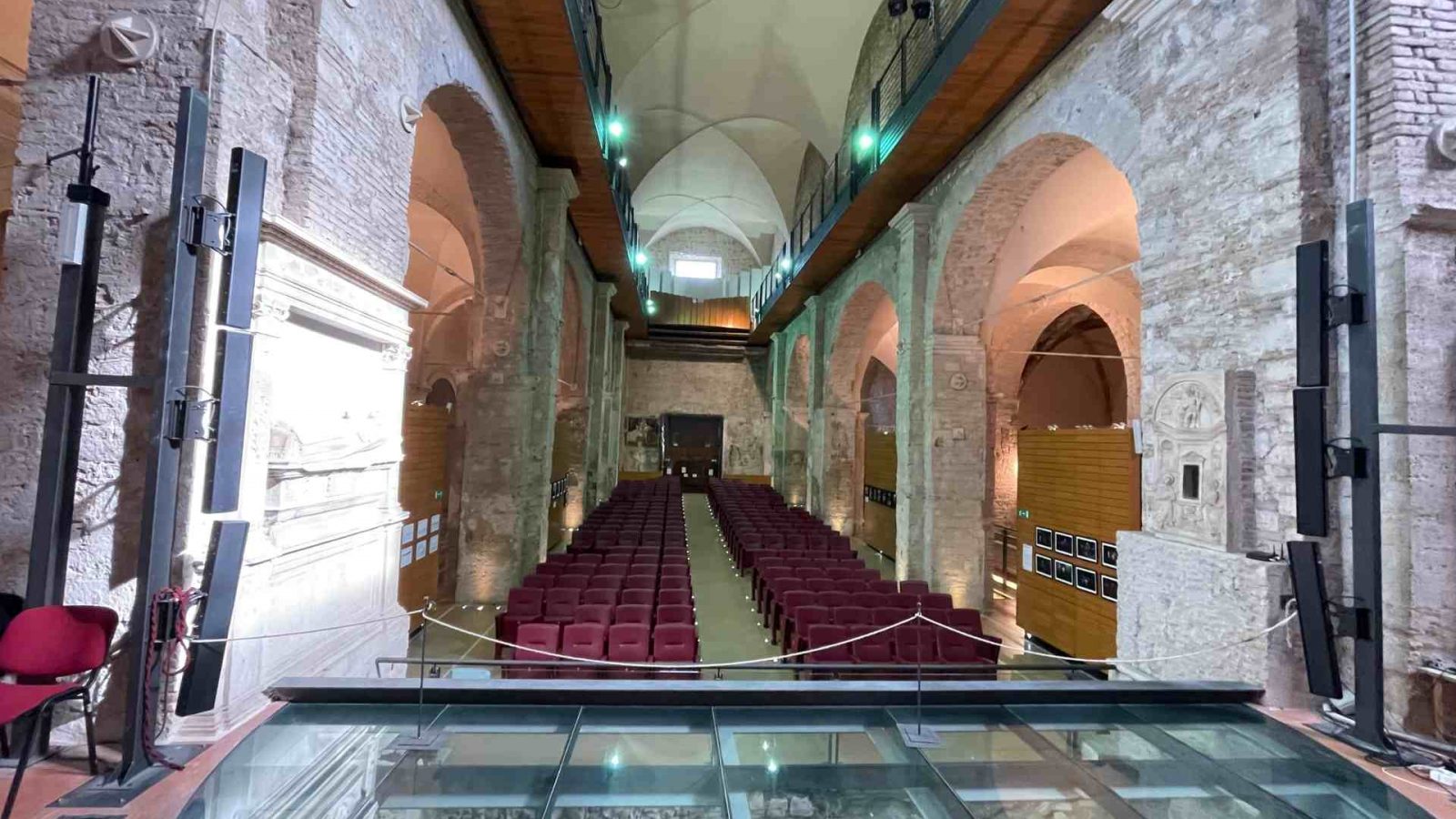
Auditorium Bortolotti
Ex Chiesa di San Domenico, Strada Mazzini, 23 – 05035 Narni TR
Phone: 0744 747272
The ex Church of San Domenico is part of the visit to Narni Underground.
In case you want to organize events, contact the numbers of the contacts.
Park the car in the Suffraggio’s Parking, go up with the elevator until via Garibaldi, then continue to piazza dei Priori and then to via Mazzini.
Discover Narni.
Continue to walk with us, discovering what to see inside the Medieval walls.
Continue on the short itinerary.
Or on the long itinerary.
Or discover the points of interest of Narni and of its territory:
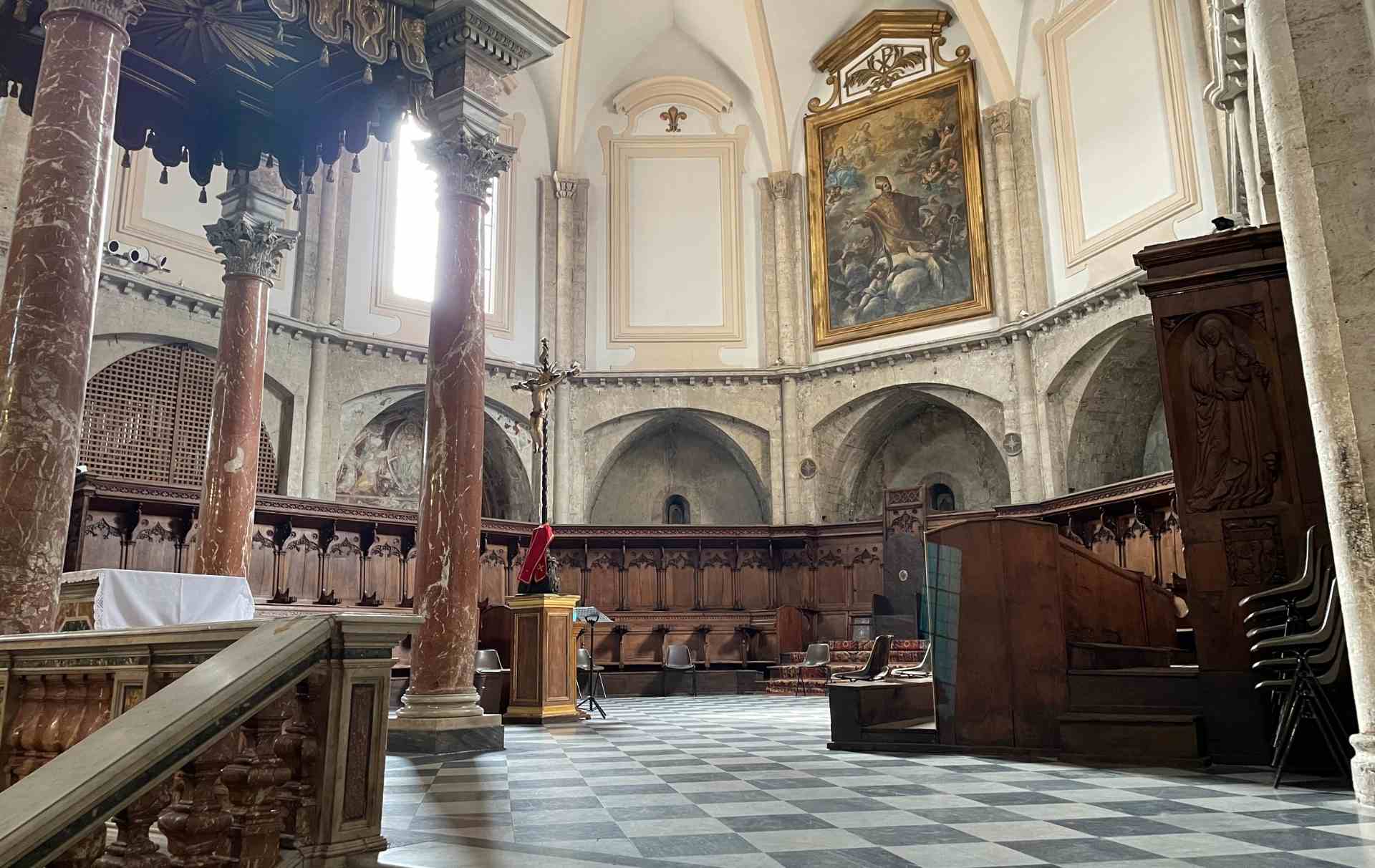
The apse: the seven chapels and the chorus
The apse, in the Gothic architecture, is characterized by seven chapels inside of which the architect has wanted to link the uniqueness of the Narnese
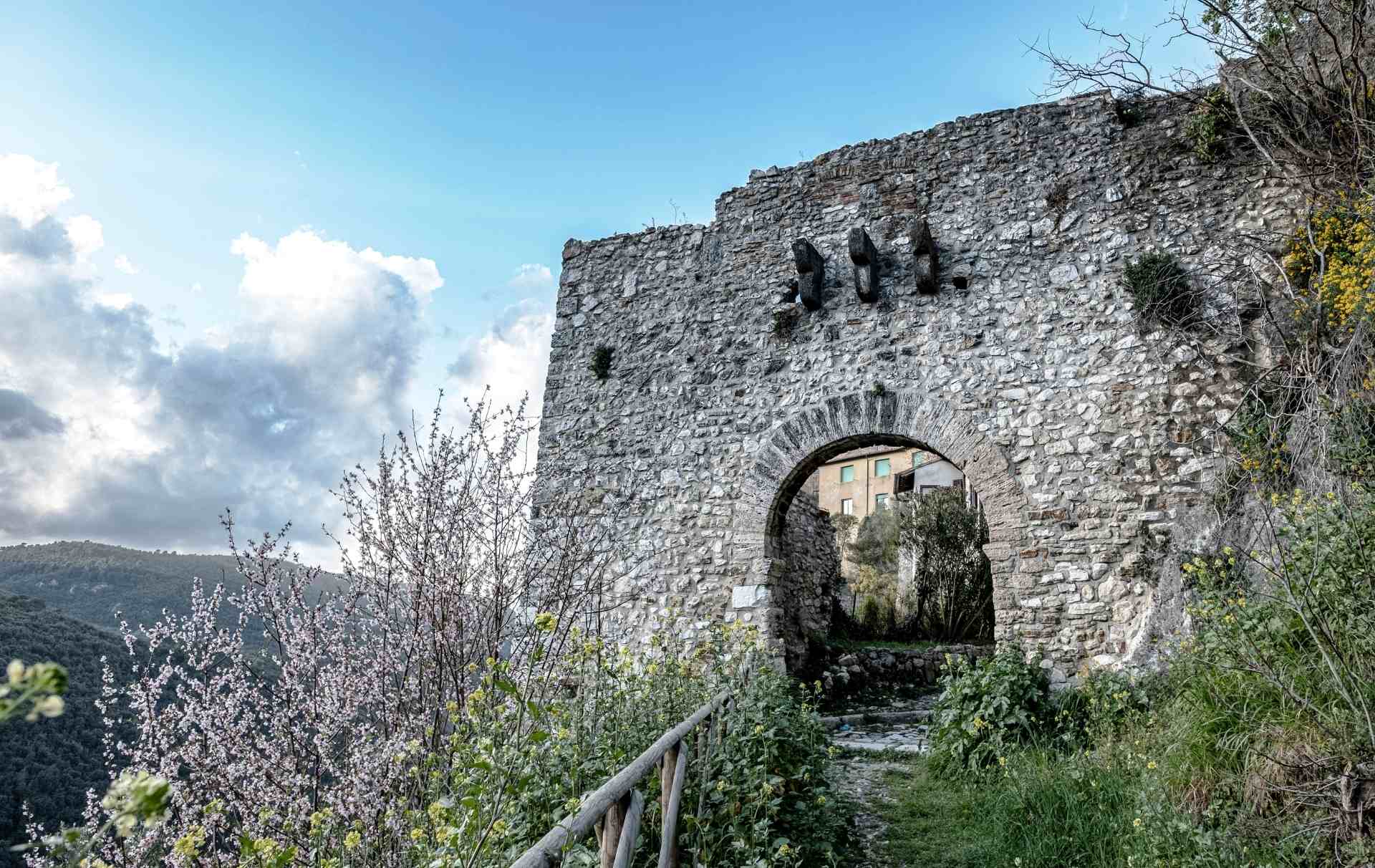
Pietra Gate
Faced on the slope which looks towards the valley, Pietra Gate (called even Porta delle Prede) is a suggestive medieval structure which give the name
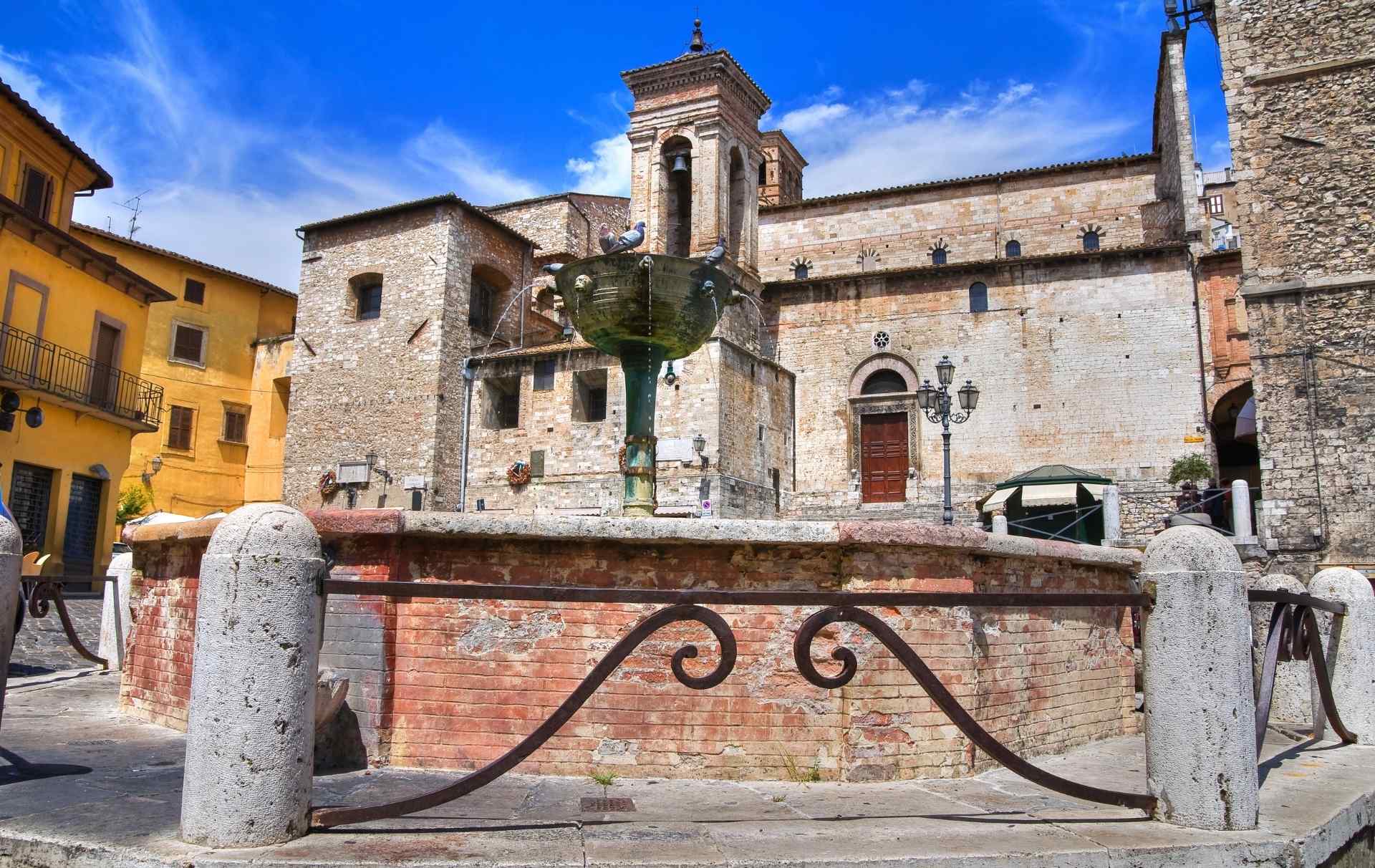
Piazza Garibaldi
Piazza Garibaldi (Garibaldi Square) was once called Lake Square or Lacus square because of a large cistern used during the Middle Ages to provide water

